– Today we are pleased to introduce Dr. Patrick Steele as part of the Wisconsin Historical Museum’s History Sandwiched In lecture series. The opinions expressed today are those of the presenter, and are not necessarily those of the Wisconsin Historical Society or the museum’s employees. (laughter) Patrick W. Steele is an associate professor of history at Concordia University Wisconsin. He earned his B.A. and M.A. in history at the University of Wisconsin-Milwaukee. He attended Marquette University where he earned his Ph.D. in modern American history. Before arriving at Concordia, he taught at the University of Wisconsin-Fox Valley, the University of Wisconsin-Fond du Lac and Wisconsin Luther College. Here today to discuss how and why Milwaukee lost its beloved Braves to Atlanta, please join me in welcoming Patrick Steele. (applause)
– Thank you, thank you. It’s a pleasure being here, thank you very much. It’s great to see the attendance. I wish I had room in here for everybody. Hopefully you can see the slides from wherever you are, but thank you very much from the bottom of my heart. It’s always nice when I go out and talk to see a lot of people out here. And, kind of the focus today, with the book coming out, I really wanted to talk about the fan base, because every time I come, I meet people that talk about their memories of being there, seeing the Braves play, the connection they had, getting a chance to meet the players, and the sadness that they had when the team left, and I think for me that’s one of the reasons why I wanted to write the book. Not having lived through it, they left before I was born, I think that maybe there’s a little bit of objectivity in looking back from my perspective. And it really may be, it is an attempt to tell the story why so that fans who grew up with the team will maybe understand a little bit, ultimately why the team is no longer here. So we’re going to talk a little bit about the fan base, talk about Milwaukee in particular, southeastern Wisconsin. Wisconsin and Milwaukee had long time success in minor league baseball. In fact the American Association Milwaukee Brewers won the Little World Series both in 1951 and 1952.
They were part of the overall Braves organization. They played down at little Borchert Field, and if you’re familiar with Bob Buege’s book, Bob wrote the foreword for mine, he also wrote a book on Borchert Field. I highly encourage you to take a look at it, it’s a great read. But the Brewers were very successful, and without the Brewers, and the success they had at Borchert Field, there never would have been pressure to ultimately try and do something bigger as far as a stadium. And I talk about it a little bit in my book, but the whole idea of building a municipal stadium was kind of a foreign concept, and it really was a stretch, and maybe a little bit visionary by Milwaukee County ultimately to do this, to build a stadium ostensibly for a minor league team, but the reality was they were hoping to garner a major league team. If Major League Baseball ever expanded, or if, for the first time in decades, a team made the decision to move. The first team they really set their eyes on, and people are always shocked about this, was the St. Louis Cardinals. The Cardinals were under an ownership group that got into a little bit of trouble, and Major League Baseball, in particular the National League, was forcing their owner out, and Fred Miller, the president of Miller Brewing Company, made a strong effort to try and get the St. Louis Cardinals to come here. When Augie Busch figured out that Fred Miller, one of his rivals, was attempting to buy the team, the Busch family did buy into the Cardinals ownership that they still retain to this day.
And so that never happened, and that pretty much could have been the story, except for this gentleman here. Some of you know who he is by picture, others maybe by reputation. This of course is the world famous Bill Veeck. Now Veeck was the owner of the minor league Brewers for a period of time in the 1940s. He’s the son of the president of the Chicago Cubs, and really was the innovator. Some may argue is the Clown Prince of Baseball. I don’t know if he was that, maybe he was simply the Clown Prince of Promoting, but certainly this guy always never seemed to have two nickels to his own name, but managed to buy into multiple major league franchises at one point. Well, he owned the Brewers, like I said. Sold them when he came out of World War II because he wanted to buy a major league team. He was lucky enough to buy the Cleveland Indians right as they were peaking. He was the president of their club when they played the Boston Braves in 1948. Sold the team shortly thereafter. He ultimately put another ownership group to buy the St. Louis Browns. Now the St. Louis Browns have a strong Milwaukee connection. Some of you are familiar with this. The Browns were originally the major league Milwaukee Brewers. In the American League in 1901, one of the charter members. Well, Veeck bought the team, he bought Sportsman Park where they played down in St. Louis, realized that even though the Cardinals were renting Sportsman Park from him, they were not making enough revenue in there as the Browns, and needed to go somewhere else. Milwaukee was scheduled to open up a new stadium. There was a possibility that maybe they could go there. Now before he was able to buy the Browns, he was competing for that with this gentleman here.
This is Fred Miller. Fred Miller is the president of Miller Brewing, grandson of the founder. He is probably the most prominent Wisconsin sports official that we have had. He’s in the College Football Hall of Fame, played for Knute Rockne at Notre Dame, he was on the Packers board of directors, was instrumental in bringing Miller Brewing as a major sponsor to the NFL saving the franchise up there. He was also instrumental in building County Stadium, building the Milwaukee Arena, have a strong influence on all three of the major professional sports that play in Wisconsin today, the NBA, Major League Baseball, and the NFL. Fred Miller was also part of a group trying to buy the St. Louis Cardinals, or excuse me, the St. Louis Browns. And he got undercut a little bit by Bill Veeck, and he and Veeck had been friends, because Miller had sponsored the minor league Brewers for several years, so they had a strong connection there. And I don’t know if Miller ever got over the fact that Bill Veeck bought the team out from underneath him, because I think that Miller really wanted to buy the team, bring it here, and he was so dedicated to southeastern Wisconsin, that had he done that, we probably still would be the home of the major league Brewers, but they would have been part of that original franchise that’s now playing in Baltimore. So Miller is behind the scenes really pushing to get either St. Louis Browns, Cardinals, or eventually the Boston Braves potentially to come.
And what would bring a team to Milwaukee? And that’s what I want to talk about a little bit. This is one of the original postcards, Milwaukee County Stadium. As I look around here, I’m pretty sure everybody in here maybe went to a game at County Stadium or certainly saw a game. Nobody here would ever argue that County Stadium was a destination spot. (laughter) I have always said it looked like it was designed by East German architects and built by a Soviet engineering firm. (laughter) But it fit the bill for what was ostensibly to be a minor league ballpark. You can see the original design for it was to be wide open on the sides, particular here. And this would give view to the veterans up on what they called the old Soldiers Home. It’s part of the VA facility now in Milwaukee, but they actually had grandstands built out there where the veterans could go out, sit there, and they could watch a game. It was part of the deal to actually get the ground to put County Stadium up, because originally that was federal land. So it did take an Act of Congress to get this built. One of my favorite photographs of the stadium is this one right here. This one’s probably from about ’54, ’55. It’s got the bunting on from opening day. It’s got the teepees on there to really kind of showcase what it was. For people of my generation that grew up with the Brewers, it’s a little bit unusual not to see in bolden letters on the side Milwaukee County Stadium, but this of course is before some of the major renovations that went into the ballpark to actually come. Now, when Lou Perini makes the decision to bring the team here, and there’s a long story behind that, I’ll keep it short, in theory.
People ask me, and it’s in the book, but “Why did the Boston Braves leave?” And the answer’s really simple. They drew 280,000, just barely more than 280,000 for the entire 1952 season. Now even though Perini owned his own stadium, he owned Braves Field, there was limited parking around the facility, they were clearly a second tier team in compare to the Boston Red Sox, but Lou Perini, like Fred Miller, was a local guy. He was a Boston guy, he was a New England guy through and through, he wanted to save the team. He ultimately believed if he had one more year, if he had 1953, he could have saved the team in Boston. And there is a possibility, because what he knew was what became evident on the field. The team was really good. It was on the verge of becoming really good. And there were a few players matriculating yet through the minor league system. If he could just get them into Boston before they left, he might have saved it. Unfortunately for him and the fans of Boston, that would not happen because Bill Veeck wants to move his St. Louis Browns to Milwaukee, and he’s looking at the stadium. Now, take a look at a photograph here to kind of explain this.
Well, this is a picture here, and this is what was appealing about it. This is shortly before the stadium actually opened. If you look very carefully in the seating bowl down here in the bottom, there’s no seats installed yet. A lot of this would be temporary seats, fold-up seats that they would have for the first season at least, in some places going into ’54. Portions of the scoreboard out in right field were parts that were eventually brought in from the old Braves Field in Boston. They moved some of the parts here, including the organ. But you can look at the stadium and you can see that in our vision, if you’ve been there towards the end, this doesn’t look like it. One of the things that Lou Perini did in his agreement with the Milwaukee County Board was, “If I bring my team, you need to put some improvements in.” Now this is a brand new ballpark, hadn’t even opened yet, and he put in a request for up to $2 million, which in 1953 was substantive money, but he wanted improved lighting, improved office facilities, the Braves would take up much more headquarters space in County Stadium than the minor league Brewers would, had a bigger staff, scouting, all this other stuff, had to be addressed within the stadium before he agreed to do it. Fred Miller working behind the scenes helps the County to go along with this, and ultimately the Braves will make the decision in March to come to Milwaukee and give it a shot.
And they were greeted by an overwhelming fan base. And again, some of these pictures, I realize, focus specifically on the stadium, but that’s where the fans go, right? That’s the place where you go to meet. Now, the photograph I have up next is also one of my favorites. This is taken much much later. This is actually taken just before Miller Park was built. You can see by this photograph, and the reason I love it is if you look at the roof line of the stadium you can see the areas that they added on. This was all done during the Braves tenure. Part of it was because in ’53 and ’54 it was so hard to get seats for the fans that wanted to come up that they needed to keep expanding the facility. So it turned out to be much bigger than they ever anticipated. Now if you remember my story that I told in the beginning about having the opening to the side so the veterans up on the hill, well this blocked off their view. So what the team would offer then, is seats inside the stadium at a reduced cost, and they would set a block aside every game and if within 24 hours, if those tickets were still available, then they would turn around and sell those to the fans. What you can also see in this photograph, too, is the fully-developed bleacher areas in the outfield. That would not come until very late in the Braves tenure.
Prior to that it was gravel and temporary seating out there, and it was not very conducive to fans that had to sit out in the bleachers, particularly women wearing high heeled shoes had a hard time walking through there because it was simply gravel underneath, it would attract flies and mosquitoes. It was not a particularly nice place to go catch a game on a nice humid day, so eventually they would put asphalt underneath and they put the nice bleachers up there. But, again, this is much much bigger than the County ever envisioned that they would have. And the seating capacity was much bigger than they had ever expected, and part of it was because of all of the fans that showed up. Now, from this photograph, we’ll take a look at this one. This is actually taken from 1953. This is within the first summer of baseball being played there. You can see the temporary seating in the outfield, a lot of people sitting down. There’s a clear cyclone fence that kind of runs the perimeter of the field. But the neat part is, as you look around, all the sections are filled, and this was fairly common. Now part of it was because the excitement of actually having major league baseball. And one of the things I’ll talk about as the presentation goes, is the whole idea of fan retention. That bringing fans in is part of the experience.
My wife and I went to the Brewers-Braves series over the weekend, and I try to go every year the Braves come to town. I always take my mom because she likes to boo them, so as long as the Brewers have been in the National League I take my mom out there so she has her chance to do that. But just walking the ballpark, my wife and I were talking, and when our kids were little, when we used to take them to County Stadium, there was nothing really for kids to do, because you went there to watch baseball. You didn’t go there to play on slides and swings, right? You didn’t go there to go throw a simulated ball. You went there to see a baseball game. So the dynamics of the way we view games now and fan retention, things that they do to keep fans at the ball park, is much different now than it used to be back in the day. But you can see here, full stands mean full concession sales, all kinds of other things going on, and it was a great time to be a Braves fan because the team moves, and they got good. And they were, of all the teams that are going to move, and I’ll show you this in some slides I have a little bit down the road, they’ll move and they got good. That was the exception to the rule. Because almost every other team that moved with the exception of the Braves and in theory the Los Angeles Dodgers, every other team that moved was a second-tier team that was not particularly good and not really competitive.
And certainly that bears out when you look at attendance factors. One other photograph I’m going to show you here about a stadium, and you can tell I’m very fascinated by County Stadium, is an overhead shot taken in 1959. And again you can see that there is more of the temporary bleacher buildup in the outfield. It’s not complete, if you look very carefully, from the left field foul line over to center field, you can see what looks like a pasture almost. That was from the temporary seating that they put up there during the previous fall for Packer games. So it’s one of the things obviously that we lost when the Brewers made the decision to move to Miller Park, and the decision was made to eliminate County Stadium. Obviously we lost the ability to host Packer games down in Milwaukee, but certainly the Packers have accommodated Packers fans from the area by offering tickets up there, but prior to that when the stadium was built, that was one of the other deals to help get the taxpayers in the county to help do it. The Packers were playing some games, they played some out at, originally at Borchert Field, they played some out at State Fair Park, kind of played all over the place. County Stadium was not a perfect place to see an NFL game, but, boy, in the 1950s and 1960s, if you got a ticket out at County Stadium to see those Packer teams play, I don’t think you’re complaining too much, right?
The other thing I want to point out, too, is the expansive parking lots. And this is one of the reasons that made Milwaukee attractive, it’s also going to be one of the reasons why the Braves ultimately will leave. While the fans are paying to be in the stadium, you see all those cars there? So I’m standing here right now, and if I took a guess from everybody here, most people, unless they’ve read the book, would not know how much the Braves made off the parking lot. See all those cars there? You know how much money they made that day? Nothing. Not a dime. The Braves did not get any of the parking lot revenue. That all went directly to the County. So you can see the lost revenue opportunities for a team like the Braves, but other owners like Walter O’Malley of the Dodgers, he looks at what he had at Ebbets Field, while baseball fans look at Ebbets field nostalgically, it was beautiful, it was all these other things. There’s no parking around it. It was not easy to get to. What did people want in the post-World War II era? They want to get in their car, they want to go to the ball game, they want to be able to get their stuff, and they want to be able to go home. You’re out in a wide-open area here. You’re not leaving your car in a neighborhood. You are leaving your car out around the expansive lots of the stadium, you could tailgate, you could do all those other things.
Owners are looking at it as pure revenue that’s directly to their bottom line. Helps pay for scouts and stadium maintenance and all these other things, but the Braves wouldn’t get any of that revenue. Now as we talk about the fans, and we talk about the Milwaukee Braves, we talk about some of the fan favorites. And I don’t talk a lot about players in the book because they’re not a major part of the book. But I like to point it out whenever I have a chance to talk to people like you is that guys like Johnny Logan, Logan played both for the Brewers, you can see there in his Brewers uniform. If you look very carefully actually, it’s stylized to look like the Braves. The Braves ownership group bought them in 1946. You can see the cap that he’s wearing. Everybody identifies it today as a Milwaukee Braves cap. It was technically a Milwaukee Brewers cap before it was a Braves cap. And there of course is Johnny Logan when he was playing for the Braves. Photographs taken at spring training I think in ’57. But the fans loved the players, and the players loved the fans, because there wasn’t as much of a disconnect between the players and the people. Baseball players then weren’t making 106% of what the average person was making or more. They were making more than most people, but they were still living in local neighborhoods.
A gentleman here before told a story about getting a baseball signed from Eddie Matthews, who was that that was telling me that story? My aunt tells stories of when she was a kid, going to play catch with Lew Burdette, right down the block. People have all kinds of stories like that when the Braves were in town, and there was a connection that they had, and the Braves, particularly those who had played in Boston, really loved the fact that they were embraced so well by the community. And that embracing by the community wasn’t just Milwaukee County. It wasn’t just southeastern Wisconsin. It was the state of Wisconsin. And it’s shocking for some people when we think about this in the 21st century, but if you polled people in Wisconsin in ’55, ’56, ’57, their favorite team was the Braves, not the Packers. Then it’s shocking for people, because the Packers have been king for so long, they don’t understand how big the Braves were for that window of time. Of course part of the window of time that they were so good is because of men like this, Warren Spahn. The all-time winningest left-hand pitcher in Major League Baseball. Yet we don’t have a statue to him in Milwaukee. They had one in Atlanta where he never played, but we don’t have one here.
So, if we could do anything, let’s get the movement going to get a statue here for Warren Spahn. But Spahnny was the ultimate Milwaukee Brave. People argue, was it Aaron, was it Matthews. Was it one of those guys? Maybe, but Spahnny had that gravitas before he came here. People knew who he was. We mentioned the 1948 World Series before. You know, Spahn and Sain then pray for rain. I mean, he was a known commodity. But he was the face of the organization for most of the time they were here in Milwaukee, and he was somebody that the fans really really responded to. I would have loved to have seen him pitch. I got to see him throw out the last opening day first pitch to Del Crandall. It really was neat to see him out there. He was very feeble by that point, but it was still that he took the time to come up here to pay his respects to the fans, shows you how much all of you meant to him and I think that’s the neatest part of the story. So I’m going to transition a little bit from showing you a couple of these cool pictures and talk a little bit about retention, because retention’s going to be one of the big things that help you understand the dynamics of why the Braves are no longer here. So I’m going to show you a couple graphs, and you’re going to get used to one particular graph line, because I’m going to show it to you in comparison to a couple of the other teams.
And I do this so we really kind of grasp ultimately why the team is as successful as we thought, because certainly they were, in particular in comparison to other teams. So let’s look at the first one. This is season attendance following relocation. Now understand this, and I talk about this in the book. Attendance alone is not an indicator of the profitability of a baseball club or a football club. For example, when you look at this graph, the Atlanta Braves would make more money playing in an empty stadium than they would make playing in front of a full stadium at Milwaukee County Stadium. It’s just the dynamics of broadcast revenue and all the advertising things that go with it so it’s not the only indicator. I’m putting this in because one of the things that irritated me the most when I was doing the research for the book, was that the Braves organization still to this day blames the fans. They blame the fans for not showing up. They talk about empty stands and this was the reason why the team ultimately had to leave and go to Atlanta because the fans weren’t there. And it’s just not accurate, because there were more fans in the worst year prior to the lame duck year, there were more fans that went to games at Milwaukee County Stadium than went to games at Wrigley Field that year. That went to games at Fenway Park. And we would never say Boston or Chicago are bad baseball towns. Yet, Milwaukee was labeled as a bad baseball town. Let’s take a look at these numbers here. So if you look at the beginning of the graph you see it starts at minus one. That’s the year before they left.
That’s the indicator where they were the year before. So for example, for the Milwaukee Braves the year before was when they were in Boston. They drew about 280,000. Look at this massive spike up. So what happens? The team moves to Milwaukee in 1953, so year zero is the first year, look at this spike, right? And it accelerates out the first couple years. There’s a little bit of settling right here, and then you’ve got ’57, ’58, and then we start to get the decline in ’59. Now let’s take a look the comparison to the Milwaukee Brewers. The Milwaukee Brewers when they came in 1970, so this would be 1969 in Seattle. It is a much slower, steadier incline. Now there’s a big rise here, and there’s a big drop off, and if you’re not familiar with what this is, this was the 1981 baseball strike. So that’s the only reason why there was the big drop down in attendance, but you look, it’s a much more measured, slowly building fan base. Now let’s look at the Atlanta Braves. Okay, so the last year, this is 1965 in Milwaukee. This is the first year they’re in Atlanta. Look they did not even come close to where they were when they came to Milwaukee. And look at this. The attendance line is much much lower the entire time. They get a little bit of spike, look at here, there’s almost a merger at the same point. That’s one of the weirdest anomalies. There’s a merger at almost the exact same point year 11 where they’re all at about the same attendance. And then the Atlanta one kind of stays steady.
The Milwaukee one obviously went down further in ’65 because that was the lame duck year. Now what do I see in this? Now again, I’m not a math major, I’m a history professor. What I see is that fan retention in Milwaukee was better than it was in Atlanta. You cannot look at this graph and say that the fans in Milwaukee were not good fans, okay? The drop off obviously towards the end is because everybody knew the team was going to go. Now one of the arguments I address a little bit in the book, but I always like to point it out when I talk to crowds like this, is this is what I believe. That I believe if you reverse this chart, you start it here. If this would have been 1953, and you work your way this way. And you got a little bit of settling there, we would talk about one of the greatest successes in baseball, still to this day. Because it would not have built unrealistic expectations. See, every team that moved had a dramatic spike in attendance, but then usually there was an immediate settling effect, because nobody wanted to pay good money to go out and see a sixth- or a seventh-place team. Well which teams are moving? The Philadelphia Athletics, right? Their best days were two decades in their past, right? They were a sixth or seventh place, bottom-feeding team. St. Louis Browns, the entire time they were in St. Louis, you know how many pennants they won? One, during the World War, in 1944. That was it, one pennant the entire time. Those are the teams that are moving. The Boston Braves won the World Series in 1914. They lost it in 1948. You’re not talking about a stellar team that had just lots of achievement behind it.
Now, again, the exception is the Dodgers, okay, and we’ll address that dynamic a little bit differently in a moment. So here is a relocation chart that again has the Braves, it has the Brewers in it, but it also then has the Baltimore Orioles. And the Baltimore Orioles of course were the St. Louis Browns. Now, of all the major league teams that wanted to move during this era, only two owners ever got shot down. One was Bill Veeck. The owners looked at him as a socialist. They’re like, “Oh, he wants equal pay for everything, “and we just simply can’t have that”. And Veeck always looked at it, it’s not a fairness issue, it was a competitive issue. You can’t have the New York Yankees playing in a stadium playing against the Cleveland Indians, and one team is making, raw numbers, say they’re making $100,000 and the other teams’ making 10. It creates an unequal playing field, okay? Well, the Browns ultimately, Veeck is going to get forced out, new ownership buys the team, they move them to Baltimore. They said specifically, “We want to repeat the Milwaukee Miracle. “We want to outdo in ’54 what Milwaukee did in ’53”. Well, what you can see is they never came close. But if you look at here again, look at this. Steady growth, little bit of settling. Little bit of settling but look at where they are.
Their base number is better than where they started, but it’s not as high as it was for the most part when they first arrived. This is a fairly common trend in baseball. It doesn’t happen here, because the Braves got good. See, that’s the thing that makes the Braves story different. So the next slide, and again, this is one of the other ones, the Kansas City Athletics. Again, the Philadelphia Athletics moved to Kansas City, so this is their last year here in Philadelphia. You can see the spike up, and again the slow settling of attendance because they were playing in a glorified minor league park. They had an owner ultimately in Charlie O. Finley that nobody liked. If you’re familiar with the story of the Kansas City Athletics, Arnold Johnson who owned the team before them had been the previous owner of Yankee Stadium, had a very very close relationship with the Yankee ownership, and any great player that ever seemed to come through Kansas City got traded to the Yankees, like Roger Maris. So there’s a whole laundry list of incidents like that so that the fans of the Kansas City Athletics never really embraced the team as much. But I’ll point this out again, look at, in Kansas City they were still higher than where they were in Philadelphia, but you don’t have this drop off that ultimately you’ll see later with Milwaukee, and why does the drop off happen in Milwaukee? Because, I believe, expectations were too high. Because when the team moved and they got good, there was fan interest to keep the attendance artificially high. There never was a settling effect that had– Let’s just say for example, the Braves don’t go to the World Series in ’57, and they go instead in like, ’62, ’63. What you would have probably had is a settling of the attendance on the front end, to probably somewhere between 700 and 900,000, and then slowly build back up again as the team got good. It would have created more realistic expectations what fan attendance was supposed to be like. See, when you talk to people in 1965, and they talk– I read this in multiple articles– they expected the stadium to be packed like it was in ’53. You can’t sell the stadium out 12 years in a row.
You can’t sell it out 13 seasons in a row. That’s just too difficult. So the next slide I have, it’s a little bit convoluted, I grant you that, but if I can figure it out I know you guys can, too, because again, I’m not a graph guy. And I had my son put this together. (laughter) See, told you. And they’re multi-colored here. So what I did was, I had him put together a chart of season attendance, again, overlay it so you can kind of see where all of them are. Now this does not have every team that moved. It has most of them. The one that outperformed, and this blue line right here is the one you got used to seeing before. This was the Milwaukee Braves right here. This light blue one is the Brooklyn Dodgers to Los Angeles. Playing in a much bigger stadium at the Coliseum, and eventually moving into Dodger Stadium. Certainly their attendance was much higher. Again we see a little bit of a spike down here. Ironically the Milwaukee Brewers outdrew them a couple of years. But you see again, even with the Dodgers, what do you see? A settling effect, right? Team moved, they went to the World Series in ’59, went to the World Series a couple times in the 1960s, and what happened? Little bit of a settling effect as they moved into the 70s. The green one, San Francisco Giants. Never matched the initial attendance in San Francisco that the Braves did. What do we see? We see a settling. A slow steady climb, and then what happens? A big drop off. The Oakland Athletics, when they moved from Kansas City ultimately, look at this. Never, ever, ever got close to where the Braves were in Milwaukee. And again you can see the drop off here. I have the Kansas City Athletics, I talked about that one before. Nobody would say Baltimore’s a bad baseball town. Nobody would say San Francisco’s a bad baseball town. People were saying Milwaukee was. And the numbers just simply don’t bear it out.
So what happened? Why did we lose our beloved Braves? Well, in 1962 Lou Perini had taken his corporation the previous year, made it public. He was in construction, had a lot of jobs out on the East Coast, and sold it to a group out of Chicago. Now, the group out of Chicago did not necessarily buy the team, I believe, to move it. I think that’s a narrative, and I actually spoke to Bill Bartholomay, he’s the second one in the photograph here, and we spoke for about two hours on the phone. He was as cordial as could be, answered the questions. I have no way to judge the veracity of his statements. But he made one point to me, and I’ve told this story repeatedly, but he said to me, he’s like, “Look, you know, when we first bought the team we didn’t really plan to move it”. He said, “Look, my wife and I, we had a place out in Lake Geneva for me to go see a ball game, it was 40 minutes in the car up to our box, and we could see a game.” When the team moved to Atlanta, what did he have to do? He had to get on a plane, fly to Atlanta, and he’s away from his home, he’s away from his office, he’s like, “It wasn’t really convenient”. They wanted to be baseball owners.
The problem was, they most likely overpaid for the team. It was harder to be a baseball owner than it was to be a U.S. Senator, because there were only 16 baseball teams when the Braves first came to Milwaukee. Now then through expansion obviously there would be a few more, but it was still ultimately very difficult to be a baseball owner. So when they got the chance to own the team, they bought it on the idea that it was going to be Milwaukee in the 1950s. That you’re going to be drawing somewhere between 1.5 to 2 million, your break-even point is somewhere between a million and 1.5, and the reality was that first year they owned it they barely drew more than 700,000. Now, that’s shocking. It’s a shocking number when you consider they were up over 2.5 just a couple of years earlier to be down to 700,000. Well, it is shocking, but baseball attendance was down everywhere. It wasn’t just in Milwaukee. See, by the time this ownership group was buying into the team, professional football was superseding the fan interest across the nation. It had an impact directly on newspaper coverage. So when you look at the sports pages, more and more coverage went to football than baseball. Well, in Wisconsin is there anything going on with professional football that might have a strong, well let’s see, that was the highlight of the Vince Lombardi years. So it probably had a stronger impact in Milwaukee as well, so you’re starting a deal with kind of a perfect storm. You’ve got owners that are buying a team, maybe overpaid for it, at a time when fan interest is dissipating in baseball in general across the country.
Maybe a little bit more in particular in Wisconsin simply because the interest in the Packers. And now I’ll throw another one at you. At the same time all of this is happening, the Braves are paying more to use their facility than any other team in Major League Baseball. And I think that was the most shocking thing that I found doing my research, was the expenditures that the Braves were obligated to pay to be at Milwaukee County Stadium. So one of the things that the new Braves ownership attempted to do to kind of alleviate some of the financial issues they had, was sell stock. Now I have a story in the book where I talk about stock sale, and certainly they were disappointed. They never sold the amount of stock they were hoping to. One of the people they brought on to help kind of sell it, they appointed Vince Lombardi to the board of directors, kind of the face of the Green Bay Packers, kind of help this idea of communal ownership, and it just never really went well. I don’t have an answer for it. Some people argued, “Well, you know, it was stock, it didn’t really have any voting, there was really nothing you could do with it.” All the decisions would still be made by the basic owners, they were just basically taking– And I’m like, well that’s kind of the same thing the Packers have done twice in my lifetime, where they’ve sold stock that really is meaningless but it’s a piece of paper.
Is anybody in here a Packer owner? I am. We love our ownership. And then one of the other things certainly that you find out from the book is that the relationship with the Milwaukee County Board was not particularly good. At a time when maybe you needed really strong leadership from the Board, it was not as strong as it needed to be. Certainly for the stadium negotiations starting in ’57, they got very contentious, and I understand it a little bit from both perspectives. The Braves need to maximize the revenues they’re making. Anything that they sell in the stadium, again, as I look around the room I see some people wearing Brewers things, I see some people wearing some Braves things, right? Teams want to make the revenue from that because it helps them pay for things like scouts, and spring training facilities and all this other stuff, they want to be able to control it. Well, anything the Braves want to sell at Milwaukee County Stadium, they had to get the approval from the County Board. They wanted to raise basic prices on things like beer and had to go through the County Board.
It wasn’t likely to happen, and so when another stadium deal comes along that says, “Hey, you can get all the parking lot revenue, you can control the prices inside your stadium, we’ll give you a long-term lease”. Who wouldn’t be interested at least in listening to that opportunity? Because one of the things the new ownership group found out within the first six months they owned the team, they were going to be butting heads with the County Board just like Lou Perini had. So, one of the newspaper articles that I have here is the ongoing reports that the team was going to leave. And I talk about this in a couple other different presentations that I’ve done, but the Braves and every team in baseball had been rumored to move for a while. I mean, the first rumors you really see the Braves were going to go somewhere was 1955. We’re still in the middle of the Milwaukee Miracle, and it was just kind of an outlier in an article where a guy said, “Well, you know, someday you might see these teams move”, and the Braves were one of the teams that were listed. But every team was rumored to be going somewhere. I mean, the Yankees were rumored to be going to California. So I don’t put a lot of credence to that until 1963. At the All Star break in 1963, The Sporting News reported that the Bartholomay group had a deal in theory in place to take their team down to Atlanta when Atlanta’s new stadium opened. Now, is there truth that there was a deal in place? I don’t think they had a signed deal. I don’t even think they were close to a verbal agreement. But they were certainly moving in that direction, and the Braves ownership group made it clear that they were willing to talk to them when their stadium lease was up. And the ownership group looked at it this way, their stadium lease they had in Milwaukee County, they viewed it like a player contract. You can cut a player, you might still have to pay him, but you can cut a player, they thought they could do the same thing with their municipal stadium. They thought at the point that they could go to Atlanta was up to them. Certainly there will be a different interpretation from Milwaukee County.
One of my favorite photographs of this era is we start to put a night cast on our time in Milwaukee. Twilight has come, rumors are now proven to be true that the team is ultimately going to leave, the owners will blame you. Unfortunately, and I think that’s the most unfair thing thrown at the fans in the state of Wisconsin, is that they simply disappeared, and it really wasn’t the case. Certainly they were not there is as strong of numbers as they were before, but as you saw from the other numbers, they were better than almost every other place, every other team that moved. I have a couple photographs here as we get near the end. This is some of the photographs from the last night at County Stadium and that the Braves played as the Milwaukee Braves. Hall of Famer Eddie Matthews looking over, the only player to play in Boston, Milwaukee and Atlanta for the Braves. And then a bunch of the other players here standing in the dugout. And I think one of the things that I have heard a lot from fans that are older than I am, they would say, “Well, you know, the problem was we didn’t really know the guy, all the guys we liked were gone. The players they got in return never really developed”. And certainly that was the case the Braves would contend periodically, but they just never could consistently put together a winning product.
While they finished with a winning record every year they were in Milwaukee, they just didn’t get close to that first tier after 1959, they just really kind of settled into the bottom half of the National League. “Taps” at the final game, again look at the sparse crowds. But look at, again I’ll point out the expansion. You can see how far out now the bleacher sections go. Certainly the stadium footprint looks dramatically different by 1965 than it had in ’53 when the team first came. One of the saddest photographs, this one’s been in a lot of different books, but “See you next year Braves”, and unfortunately Milwaukee would not see the Braves again until 1970 when they came up to play an exhibition game. And then fortunately with the Brewers going in the National League, now the Braves come back on a regular basis. So my mother who grew up a diehard Braves fan. I took her to the first Braves game back at Milwaukee County Stadium, and I talk about the story a little bit in the beginning of the book. Unfortunately, Greg Maddux was just lights out that day. The Brewers did not really look good against him but my mom stood and she booed the Braves, just to get it out of her system. (laughter) I did live up to that promise I made her as a young lad.
And then, one more graph, you knew it was coming, right? All right, so here is a retention graph. Now this one I love for a couple of different reasons. So, the way this works is, this is the first year, so this is 100% of your attendance the first year you’re in there. So your number may vary from city to city but that’s 100%, right? So as we break the numbers down, look what happens. The Milwaukee Braves went up over their 100% mark all the way out to year six, going into year seven, when it went below where they had been in ’53, and progressively slid down. In Atlanta, look at this. They dropped off right away. They never got, we use 13 years or 13 baseball seasons, for all the graphs I showed you was 13 seasons to compare apples to apples, the Braves experience versus everybody else. Look at this. In Atlanta, they never got close to 100% of where they had been in ’66 when the team first played there. Look at again, the Milwaukee Brewers. They dropped off. The team was not very good, they get above 100%. And they get going, and they’re above that benchmark, until you get to right here, and again, this was the strike in 1981 and they came out of it in ’82, of course go to the World Series. They set the record initially at County Stadium in ’83, then attendance kind of settled in. Certainly it’s much higher now. I was at the Braves game over the weekend, and I think on their final game, the attendance so far for the year is up over 1.6 million already, and we’re only halfway through the year.
So again, Lou Perini, Boston, 1952, they drew 280,000. In 2018 in Milwaukee we’re at 1.6 million and we’re just barely over halfway through the season. So that’s the difference that attendance will do. Now, one last thing. Finances have everything to do with this. The local business community did what they could to support the team while they were here. They simply could not match up with the dollars that Coca-Cola could bring to the table. It’s one of the reasons ultimately why the team would go. I will say this. If the decision to move, if that would have been 10 years earlier or 10 years later, so if they would have looked to take them, say in 19, you know if the Braves would have come even earlier, I don’t know if the Braves would have ever left. And certainly 10 years later that wouldn’t have happened. Had they been able to lock the Braves into a long- term deal in 1957, sign them to a 10-year lease, meant that they were locked through the 1967, Atlanta would have gone to look for somebody else. The two teams they wanted was either the Cleveland Indians or the Milwaukee Braves, were the only two teams that had leases coming up. If Milwaukee County would have had the foresight to get a long-term lease in place, the Braves might still be here. That is my story on the Milwaukee Braves and their fan base. Thank you very much for coming today. (applause)
Search University Place Episodes
Related Stories from PBS Wisconsin's Blog

Donate to sign up. Activate and sign in to Passport. It's that easy to help PBS Wisconsin serve your community through media that educates, inspires, and entertains.
Make your membership gift today
Only for new users: Activate Passport using your code or email address
Already a member?
Look up my account
Need some help? Go to FAQ or visit PBS Passport Help
Need help accessing PBS Wisconsin anywhere?

Online Access | Platform & Device Access | Cable or Satellite Access | Over-The-Air Access
Visit Access Guide
Need help accessing PBS Wisconsin anywhere?

Visit Our
Live TV Access Guide
Online AccessPlatform & Device Access
Cable or Satellite Access
Over-The-Air Access
Visit Access Guide
 Passport
Passport
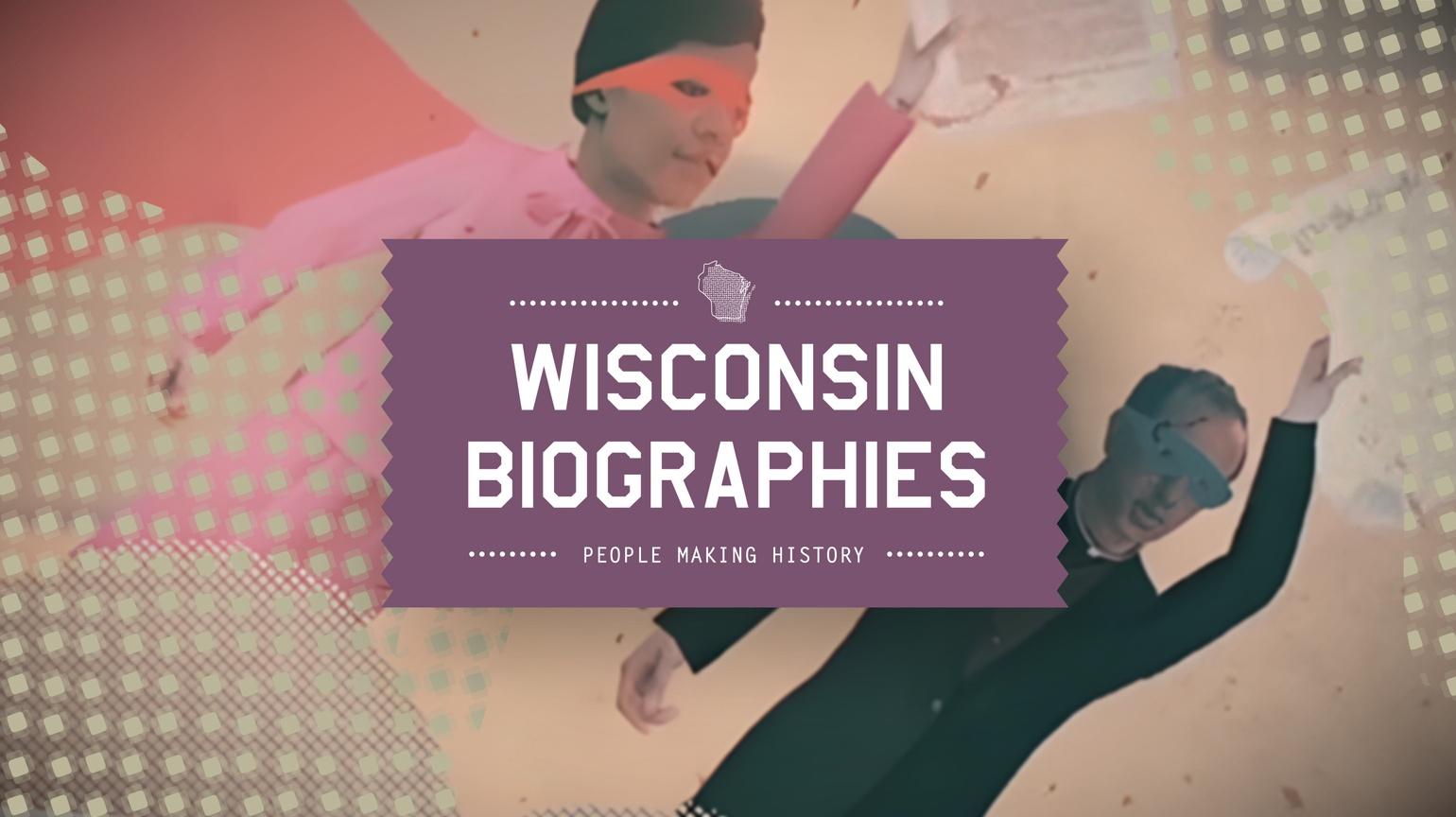


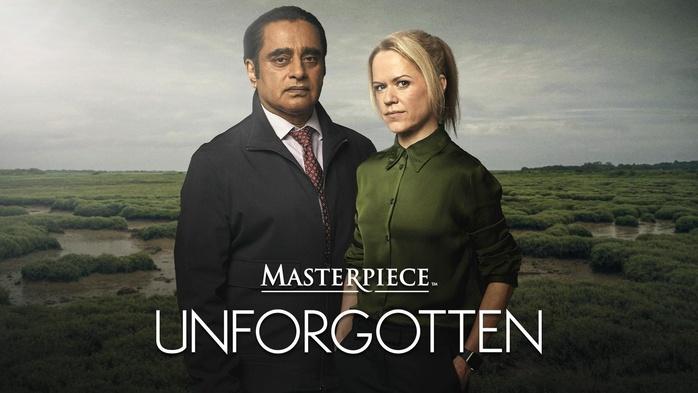



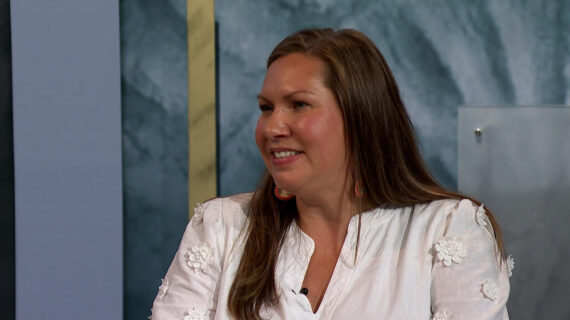


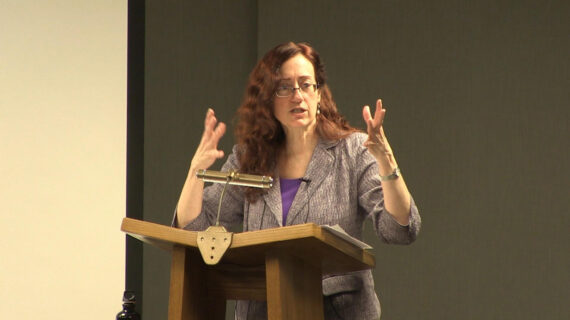
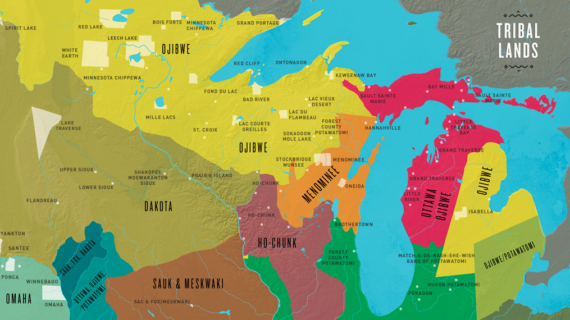
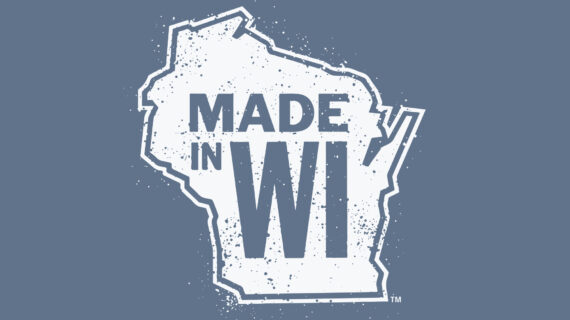

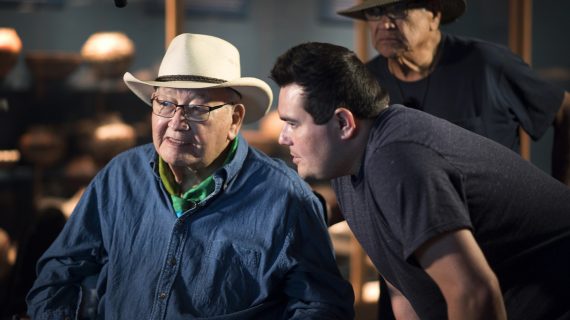



Follow Us